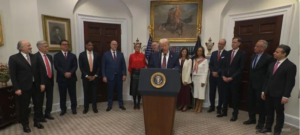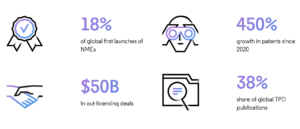![CTCs_galanzha1HR.jpg A laser-based technique detects circulating tumour cells in the veins of patients with melanoma.
[Credit: E.I. Galanzha et al., Science Translational Medicine (2019)]](https://european-biotechnology.com/wp-content/uploads/2024/04/CTCs_galanzha1HR.jpg)
Breakthrough in liquid biopsy
German and US researchers have developed a diagnostic technique capable to detect one single circulating tumour cell in one litre of blood.
Scientists from Germany and the US have created a laser-based platform that can quickly and noninvasively screen large quantities of blood in patients with melanoma to detect circulating tumour cells (CTCs) – which contain precursor cells to deadly metastases.
The new system accurately sniffed out hard-to-detect CTCs in 27 of 28 patients with the cancer in as little as 10 seconds and was 1,000 times more sensitive than existing assays (detecting one CTC per liter of blood). Although more validation is needed, the test could help identify patients at risk of metastasis and guide the use of photodynamic therapies capable to specificially eliminate melanoma cells.
Researchers have attempted to assess CTCs to determine the risk of metastasis in patients, but existing assays can only examine certain millilitres of blood, which sometimes do not capture any CTCs, which are very rare in early disease stages and which vary between different tumour types. Seeking a solution, Ekaterina Galanzha and colleagues created a system called the Cytophone that uses laser pulses and focused ultrasound to noninvasively peer under the skin of patients with melanoma, revealing pigmented CTCs that pass through veins in the arm.
Galanzha et al. applied their technology to 28 light-skinned patients with melanoma and 19 healthy volunteers and found that it identified CTCs in 27 (96%) of the patients between 10 seconds and 60 minutes without generating false-positives in the controls. Importantly, the system’s laser could destroy the detected CTCs, resulting in a large drop in CTC numbers. It also uncovered circulating blood clots – the second leading cause of death in cancer patients. The Cytophone was able to account for other variables such as patient skin pigmentation and movement, but future studies should investigate and expand on the range of skin tones for which the technology could be used.


 White House
White House Clarivate
Clarivate H. Zell - wikipedia.org
H. Zell - wikipedia.org